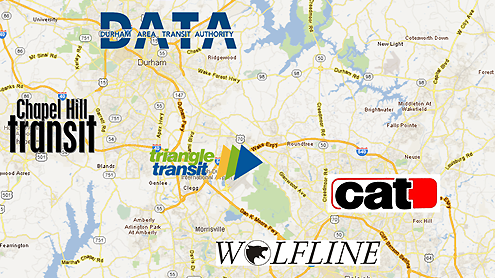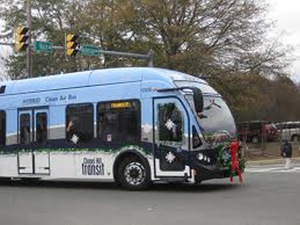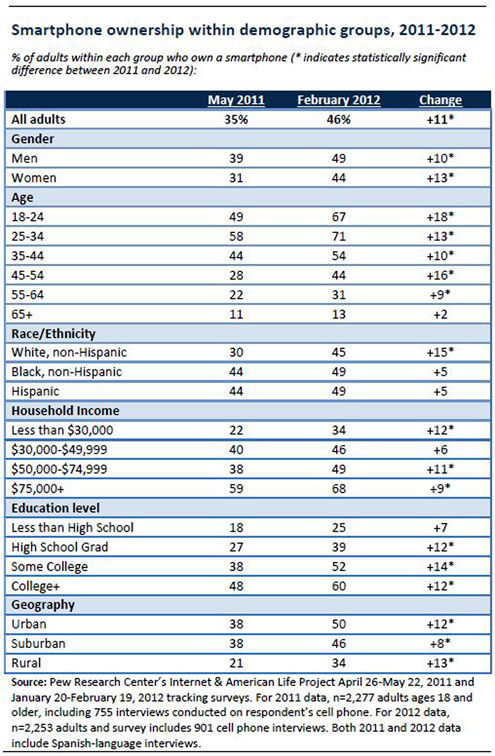

The Research Triangle Region of North Carolina grows and benefits
By Josh Cohen
The Research Triangle Region of North Carolina includes the capital city of Raleigh, North Carolina State University and Capital Area Transit; Duke University in Durham and the Durham Area Transit Authority; and the University of North Carolina at Chapel Hill and Chapel Hill Transit. Together these transit agencies operate approximately 320 vehicles transporting passengers to and from the various universities, medical centers, downtowns and other job centers within the Research Triangle.
Between 2006 and 2009, Capital Area Transit, North Carolina State University and Chapel Hill Transit all procured real-time passenger information systems to improve the transit experience for their riders but chose different automated vehicle location (AVL) vendors. In 2010, Durham Area Transit Authority and Triangle Transit elected to provide similar tools to its riders.
The good news was that these transit agencies wanted to invest in passenger information to give their riders real-time bus location on the web and on their mobile phones. The bad news was that these separate passenger information systems would not be able to communicate with one another.
As the coordinating agency for this project in the region, Triangle Transit grew concerned over the possibility of up to six different AVL vendors operating in this area and unable to talk to each other, which would make it extremely difficult for riders to understand all the options. In its due diligence, Triangle Transit found that AVL providers and web and mobile developers have very different strengths that did not often overlap.
With that finding the agency decided to split up the procurement by first purchasing AVL for the agencies that needed the technology. Secondly, it purchased an integrated, regional passenger information system that took real-time data from all the AVL vendors to provide a consistent look and feel. For this the agency chose the TransLōc Transit Visualization System, a real-time system that is more convenient for riders and more efficient for transit administrators.

Triangle Transit established two primary goals: increase customer satisfaction and attract more choice riders.
Its first step was to ensure all riders including transit-dependent riders had access to real-time information. To accomplish this the agency invested in LED signs at transit hubs and static signs with instructions on how to get real-time information via SMS.
As the graph from the Pew Research Trust shows, smartphone penetration rate is increasing with all income levels, all races and all education levels. As more and more riders gain access to this technology, their expectations for its use will continue to rise.
To attract choice riders in higher income and education levels — currently the highest level of smartphone riders — Triangle Transit realized it has to overcome the “chocolate cake problem,” a funny but true analogy from Glenn Kurtz, VP of Alternative Transportation for Lanier Parking.
“It seems if people have a car, they drive it, even if other options are available,” he says. “It is like having a big piece of chocolate cake placed in front of them after every meal. They just eat it.”
Convincing people to consider not using their single-occupancy vehicles can be tough. They are so convenient, comfortable and trustworthy. On the other hand, public transit introduces other variables and brings up questions like: Will my bus arrive on time? Where is my nearest stop? What do I do if I have to leave work early?
The challenge for transit is to be on a more equal footing with automobiles. Triangle Transit opted for more advanced technology to provide its customers the means to see five different transit agencies in the same place.
Results
To increase customer satisfaction, consider that according to the most recent data available from the time of the project’s launch through February 2012, ridership increased by 25 percent. Call center calls have been flat and dispatch calls are down 68 percent. Dispatchers can now get real-time information from all the agencies in one place.
While this project cannot take full credit for the ridership increase, it has certainly impacted the leveling off of call center calls now that riders have information in the palm of their hands.
It will take more than a few months to determine if Triangle Transit and its constituent agencies are attracting more choice riders. Initial indications that include positive social media comments by riders and community members suggest that choice riders indeed count for part of the increased ridership.
The new technology is also serving as a platform for rider engagement. Triangle Transit has included the real-time API in its developer resources area, and an enterprising rider has already created a Windows Phone app.
The lesson here is that even with existing AVL, transit agencies and regional partnerships can create a unified regional web and mobile app presence. To experience the website or app, visit live.gotriangle.org from a computer or mobile phone. BR
_____________________________________________
Josh Cohen serves in sales and marketing for TransLōc.

